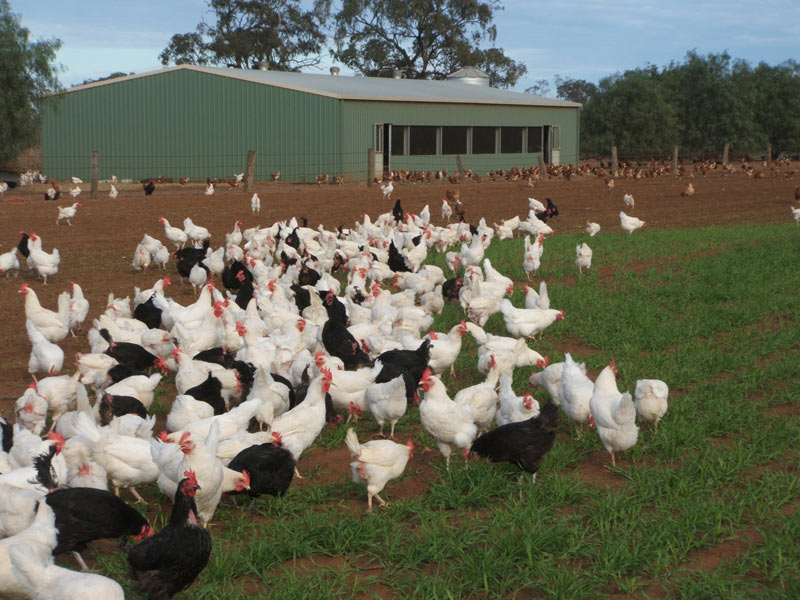Welcome to another edition of eChook. In this edition, I would like to talk about what free range poultry production actually means in Australia. This stems from the fact that no two free range farms are the same. Consider the range of issues impacting on free range farms, including climatic conditions, species of plants (vegetation), soil type, landscape, water source, wild bird populations, insect populations, size of the farm, indoor vs. outdoor areas, shed and nest-box designs, stocking density, litter type inside the sheds, breed of birds, feed, environmental management, etc…
In Australia, currently 40% of eggs and 15% of meat chickens are produced free range, with dramatic increases expected over the next five years. In the case of eggs, this shift is facilitated by the two supermarkets, Coles and Woolworths, as they have decided to phase out cage egg sales during the next few years.
Can the Australian egg industry meet the demand for eggs by 2018? This is a difficult question for egg farmers because not very long ago some 30% of egg farmers dropped out of the industry due to changes in regulation related to cage size. However, ethical and sustainable production of food is the future trend for consumers in the developed world and thus it cannot be ignored.
Regarding the free range situation in Australia, the question is whether it is possible to have a uniform standard for a highly diverse production system, that is, is a “one size fits all” approach to free range production appropriate? The answer is, obviously, “no”. So what will be the common areas across all types of free range operations? What will make them more sustainable in terms of food production, bird health and welfare, and environmental management points of view?
The Poultry CRC is looking into conducting a survey of free range poultry farms across the country. The survey results will underpin the commissioning of rational, evidence-based research projects to address the important scientific and commercial questions pertaining to free range operations. The survey team, led by Dr Mini Singh of The University of Sydney, will consist of researchers from numerous partners including the South Australian R&D Institute (SARDI), the University of New England, Queensland Department of Agriculture, Fisheries and Forestry (DAFF) and Poultry Works. I thank them for their enthusiasm, professionalism and collaborative effort!
Mingan


